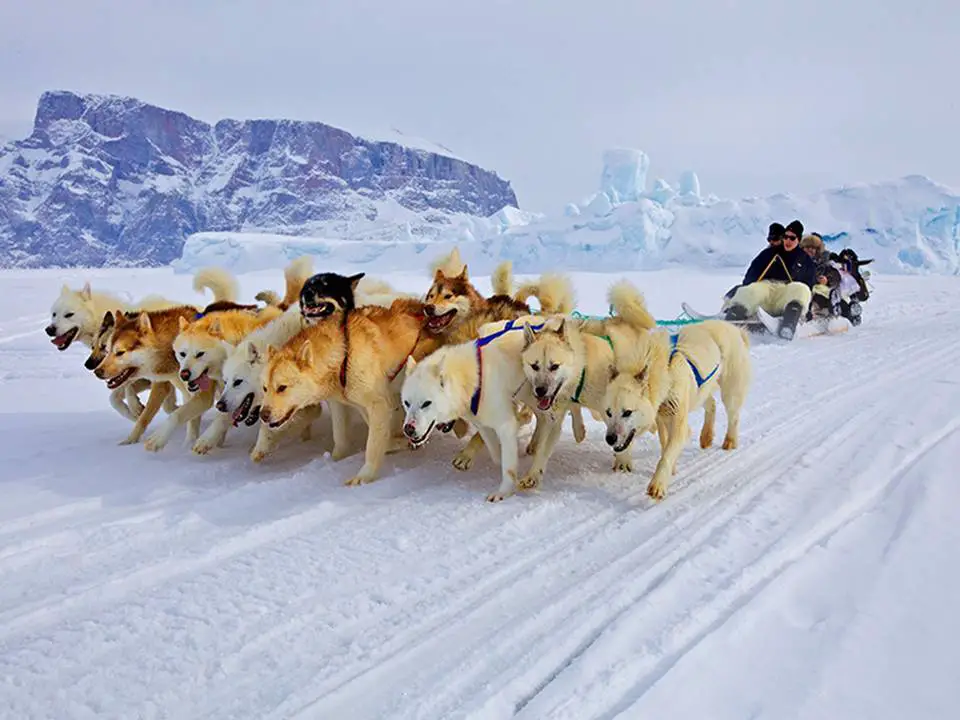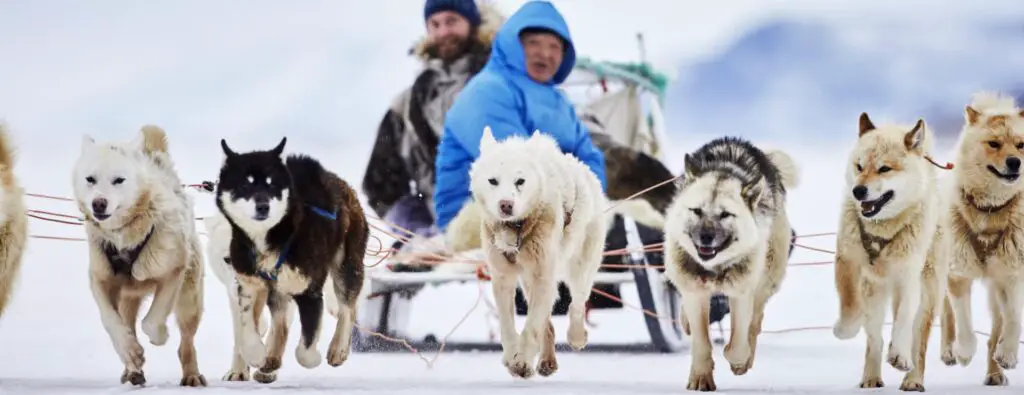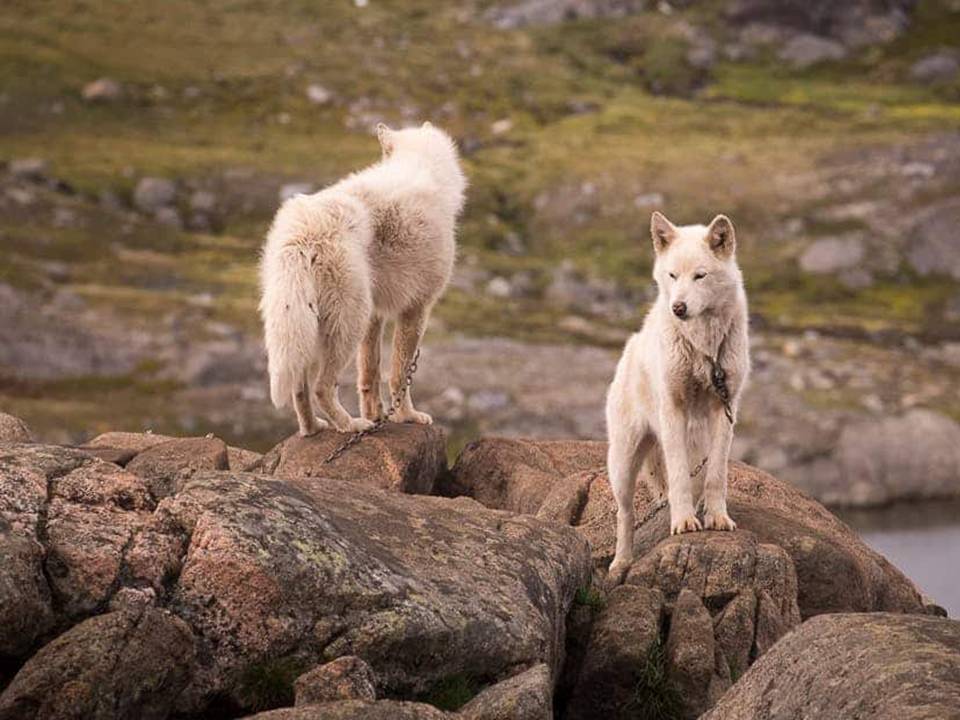The Greenland Husky
The Greenland Sled Dog is known for its strength, resilience, and endurance in Arctic conditions. This remarkable breed has a deep-rooted history and cultural significance, which stretches back thousands of years. For generations, these dogs have been crucial to the survival of Arctic populations, particularly in Greenland and surrounding regions. Their history is deeply intertwined with the lives of Inuit communities, who have relied on these dogs for transportation, hunting, and survival in one of the planet’s most inhospitable environments.
Ancient Origins: The Roots of the Greenland Sled Dog
The Greenland Sled Dog is one of the oldest breeds in the world, dating back over 4,000 years. Genetic evidence clearly shows the breed descended from ancient dogs that accompanied the Thule people. These people, the ancestors of modern Inuit, migrated from Siberia to Greenland via Alaska and Canada around 1000 AD. Not only did these dogs serve as loyal companions, but they also played an essential role by helping pull sleds loaded with supplies and game across icy landscapes and deep snow.
Although the exact date of domestication is still unclear, it is certain that the breed has been selectively bred for centuries to adapt to Arctic conditions. Over time, the Greenland Sled Dog has changed very little. This is largely due to its isolation in Greenland, where outside influence on the breed was minimal. Consequently, there was no need to alter their traits for any purpose other than hardiness and work.
The Importance of Sled Dogs in Inuit Culture
The Greenland Sled Dog has always been integral to the daily lives of the Inuit. For the Inuit, dogs were not simply working animals—they were also companions, protectors, and critical for mobility across vast, icy landscapes. In fact, in regions where modern transportation was not available until the early 20th century, sled dogs were vital for travel, trade, and hunting.
These dogs played a crucial role in helping the Inuit hunt seals, whales, and polar bears. These animals provided food, clothing, and tools necessary for survival. Moreover, the dogs could pull heavy sleds over long distances, making them invaluable for hunting expeditions. Greenland Sled Dog teams also helped transport goods and materials between settlements, often acting as the only means of communication in the remote Arctic.
The Inuit treated their dogs with the utmost respect, recognizing them as working animals. The dogs’ health and strength were paramount, as a well-maintained sled dog team could mean the difference between life and death in the frozen North.
Distinctive Characteristics of the Greenland Sled Dog
The Greenland Sled Dog is famous for its strength, endurance, and adaptability to Arctic environments. This breed is muscular, robust, and well-built, with a thick double coat that protects them from freezing temperatures. Their fur consists of a dense undercoat and a coarser outer coat, both of which help shield them from snow and ice. Their muscular build enables them to haul heavy sleds over long distances, while their broad paws prevent them from sinking into the snow.
Greenland Sled Dogs are also renowned for their incredible stamina and ability to work in extreme conditions. They can endure temperatures as low as -50°C and continue to pull sleds for hours,

even across difficult and uneven terrain. As a result, their physical capabilities have made them indispensable in Arctic exploration.
In addition to their physical attributes, the Greenland Sled Dog’s temperament is another defining feature. These dogs are highly independent and strong-willed—traits essential for surviving in the harsh Arctic environment. They do not rely as heavily on human companionship or training as some other working breeds, but they are fiercely loyal and protective when treated with respect. Their survival instincts are incredibly strong, allowing them to find their way home across vast, desolate landscapes.
The Greenland Sled Dog in Arctic Exploration
The Greenland Sled Dog has played an instrumental role in Arctic exploration. European explorers, such as Robert Peary and Roald Amundsen, heavily relied on sled dog teams during their expeditions to both the North and South Poles. In fact, sled dogs were often the only practical means of transport across the frozen, treacherous terrain of the Arctic.
Peary, who led numerous Arctic expeditions in the late 19th and early 20th centuries, attributed much of his success to Greenland Sled Dogs. He praised their endurance and strength, often claiming that without them, his expeditions would not have been possible. Similarly, Amundsen credited sled dogs as one of the key factors in his achievement of reaching the South Pole in 1911. He famously stated, “dogs are better than anything else.”

Threats to the Greenland Sled Dog and Preservation Efforts
In recent years, the Greenland Sled Dog has faced several significant challenges. Modern transportation methods, such as snowmobiles and airplanes, have reduced the need for sled dogs in many Arctic communities. Furthermore, climate change and the decline of traditional hunting practices have further threatened the role of sled dogs in Greenlandic culture.
Despite these threats, efforts are currently underway to preserve the breed and its traditional role. For instance, in some parts of Greenland, regulations have been established to protect the genetic purity of the Greenland Sled Dog. The breed is still used in tourism, hunting, and transportation in remote areas. Moreover, local initiatives are actively encouraging younger generations to continue the sled dog tradition, thus emphasizing their importance in Greenlandic heritage.
Conclusion
The Greenland Sled Dog’s long history and remarkable resilience highlight its strength and adaptability in extreme conditions. These dogs are more than just working animals—they are symbols of survival and strength in the Arctic. Their pivotal role in Inuit culture, Arctic exploration, and traditional hunting practices has firmly cemented their place in Arctic history. Despite the challenges posed by modernity and environmental changes, the Greenland Sled Dog remains an essential part of Greenland’s heritage. Above all, they embody the enduring bond between humans and animals in one of the world’s most challenging environments.


